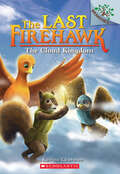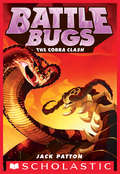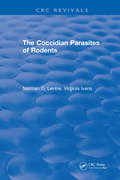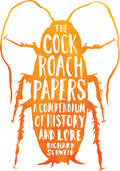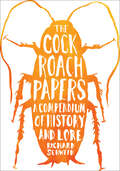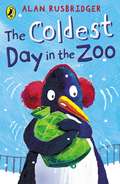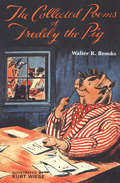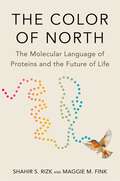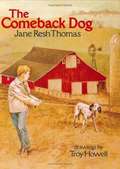- Table View
- List View
The Cloud Kingdom: A Branches Book (The Last Firehawk #7)
by Katrina CharmanTag and his friends are on a quest to find Blaze's family!Pick a book. Grow a Reader!This series is part of Scholastic's early chapter book line, Branches, aimed at newly independent readers. With easy-to-read text, high-interest content, fast-paced plots, and illustrations on every page, these books will boost reading confidence and stamina. Branches books help readers grow!Tag and his friends are on a quest to find Blaze's family, the long-lost firehawks. Using only three golden feathers as clues, Tag, Skyla, and Blaze must work together to find the magical Cloud Kingdom. But Cloud Kingdom isn't on any map... how will they find this hidden land? And who will they meet on their journey?
The Cloud Race (Itty Bitty Princess Kitty #5)
by Melody MewsCan Itty stop a cheater from winning the Cloud Race? Find out in this fifth adorable book in the Itty Bitty Princess Kitty chapter book series!It&’s time for Lollyland&’s big Cloud Race, and Itty Bitty Princess Kitty and her friends are finally old enough to enter! Everyone is used to riding clouds around the kingdom, but now they&’ll learn how to steer one too. Itty&’s driving lessons go smoothly until she overhears a fox say that he might break the rules and add boosters to his cloud! Will Itty wait to see what happens or will she jump into keep the Cloud Race fair and square? With easy-to-read language and illustrations on every page, the Itty Bitty Princess Kitty chapter books are perfect for emerging readers.
The Clover Curse (The Adventures of Sophie Mouse #7)
by Poppy GreenSophie finds a four-leaf clover that isn’t exactly lucky in the seventh book of The Adventures of Sophie Mouse!Sophie Mouse is painting in Clio’s Clover patch on a beautiful spring day when she spots something unusual. It’s a clover…but it has four leaves! Four-leaf clovers are supposed to bring good luck, right? Sophie waits and waits for this good luck, but it seems like just the opposite is happening. She spills paint all over herself, she doesn’t have any fun daydreams, and she forgets about an adventure she was supposed to go on with Hattie! Will Sophie ever be able to break this Clover Curse? With easy-to-read language and illustrations on almost every page, the Adventures of Sophie Mouse chapter books are perfect for beginning readers.
The Clover Girls: A Novel
by Viola ShipmanFrom the USA Today bestselling author of The Summer Cottage "Like a true friendship, The Clover Girls is a novel you will forever savor and treasure." —Mary Alice Monroe, New York Times bestselling authorElizabeth, Veronica, Rachel and Emily met at Camp Birchwood as girls in 1985, where over four summers they were the Clover Girls—inseparable for those magical few weeks of freedom—until the last summer that pulled them apart. Now approaching middle age, the women are facing challenges they never imagined as teens, struggles with their marriages, their children, their careers, and wondering who it is they see when they look in the mirror.Then Liz, V and Rachel each receive a letter from Emily with devastating news. She implores the girls who were once her best friends to reunite at Camp Birchwood one last time, to spend a week together revisiting the dreams they&’d put aside and repair the relationships they&’d allowed to sour. But the women are not the same idealistic, confident girls who once ruled Camp Birchwood, and perhaps some friendships aren&’t meant to last forever…USA TODAY bestselling author Viola Shipman is at her absolute best with The Clover Girls. Readers of all ages and backgrounds will love its powerful, redemptive nature and the empowering message at its heart.Don't miss bestselling author Viola Shipman's charming new novel, THE WISHING BRIDGE—where an ambitious executive rediscovers the magic of family, friendship, home...and Christmas!Other books by Viola Shipman: Famous in a Small Town The Secret of Snow A Wish for Winter The Edge of Summer The Summer Cottage The Heirloom Garden
The Coach House Cats
by Marilyn Edwards'A colourful series that celebrates the many ways animals enrich our relationships and our lives' Karin SlaughterIt's become obvious that the time has come to have Pushkin, the Russian Blue tom, and Titus, the ginger moggy queen, neutered. This was indeed the plan for Fannie, the tortoiseshell, but with her longed-for pregnancy well under way it must now be postponed. Fannie's due date for her kittens arrives and, in the time-honoured tradition of cats and the best laid plans, unexpected problems arise.Following this drama, the household finds itself in turmoil again with the arrival of a black Bengal kitten, called Gilly, who disrupts the peace of both cats and people resident in The Coach House. . . With a fine eye and ear for the world of natural history, Marilyn Edwards writes about rural living with charm and passion - but it is her observation of cats and their ways that make her books so utterly magical.**Fully illustrated throughout**Praise for the Moon Cottage books:'My all-time favourite cat book' Jacqueline Wilson'Cat lovers will adore this book . . . A tender story of love between the author and her cats' Celia Haddon'All the many delights and a few of the heartaches of a life with cats are told with charm and wit. A vivid, honest, observant and involving book' Desmond Morris
The Coach House Cats
by Marilyn Edwards'A colourful series that celebrates the many ways animals enrich our relationships and our lives' Karin SlaughterIt's become obvious that the time has come to have Pushkin, the Russian Blue tom, and Titus, the ginger moggy queen, neutered. This was indeed the plan for Fannie, the tortoiseshell, but with her longed-for pregnancy well under way it must now be postponed. Fannie's due date for her kittens arrives and, in the time-honoured tradition of cats and the best laid plans, unexpected problems arise.Following this drama, the household finds itself in turmoil again with the arrival of a black Bengal kitten, called Gilly, who disrupts the peace of both cats and people resident in The Coach House. . . With a fine eye and ear for the world of natural history, Marilyn Edwards writes about rural living with charm and passion - but it is her observation of cats and their ways that make her books so utterly magical.**Fully illustrated throughout**Praise for the Moon Cottage books:'My all-time favourite cat book' Jacqueline Wilson'Cat lovers will adore this book . . . A tender story of love between the author and her cats' Celia Haddon'All the many delights and a few of the heartaches of a life with cats are told with charm and wit. A vivid, honest, observant and involving book' Desmond Morris
The Cobra Clash (Battle Bugs #5)
by Jack PattonNever leave a bug behind-- collect all the Battle Bugs books!Max Darwin is summoned back to Bug Island to discover the island in turmoil. Spike has vanished, and his disappearance has all the hallmarks of one of General Komodo's dastardly schemes. Max soon discovers that Spike has been bugnapped and is being held prisoner in the Reptilian Empire! Max must devise a daring rescue plan that involves traveling deep into enemy territory.
The Coccidian Parasites of Rodents
by Norman D. LevineThis important, long-needed revision of the authors' previous book discusses the 473 named species of coccidia of rodents. It. contains over twice as many as the 1965 book, The Coccidian Parasites (Protozoa, Sporozoa) of Rodents. Included is the available up-to-date information about each of these species. Data are given for the 99 forms which have insufficient information available to justify assigning them species names. This work can be used as a guide to future investigations, not only on rodent coccidia, but also on the coccidia of all other vertebrates and even some invertebrates. This book will serve as an invaluable and authoritative source for parasitologists. It is of importance to those involved in protozoology, tropical medicine, wildlife diseases and veterinary medicine.
The Cocker Spaniel (Learning About Dogs)
by Charlotte WilcoxAn introduction to this friendly and popular dog, which includes its history, development, uses, and care.
The Cockroach (Disgusting Critters)
by Elise GravelHilarious illustrated non-fiction about cockroaches perfect for beginning readers. You'll bug out over this perfect pairing of humorous text and funny illustrations about this insect that's been around for over 335 million years!Fast cockroach facts:Distinctive trait: Flat and oval-shaped bodyDiet: Everything! (Especially if it's greasy and sweet . . .)Special talent: RunningThe Cockroach covers lifestyle (cockroaches prefer the dark and only come out during the day when their colonies get big enough), anatomy (cockroaches have wings but rarely fly), habitat (they prefer heat to cold), life cycle (a female can give birth to up to 350 babies during her lifetime) and much more. Although silly and off-the-wall, The Cockroach contains factual information that will both amuse and teach at the same time.
The Cockroach Papers: A Compendium of History and Lore
by Richard SchweidSkittering figures of urban legend--and a ubiquitous reality--cockroaches are nearly as abhorred as they are ancient. Even as our efforts to exterminate them have developed into ever more complex forms of chemical warfare, roaches’ basic design of six legs, two hypersensitive antennae, and one set of voracious mandibles has persisted unchanged for millions of years. But as Richard Schweid shows in The Cockroach Papers, while some species of these evolutionary superstars do indeed plague our kitchens and restaurants, exacerbate our asthma, and carry disease, our belief in their total villainy is ultimately misplaced. Traveling from New York City to Louisiana, Mexico, Nicaragua, and Morocco, Schweid blends stories of his own squirm-inducing roach encounters with meticulous research to spin a tale both humorous and harrowing. As he investigates roaches’ more nefarious interactions with our species--particularly with those of us living at the margins of society--Schweid also explores their astonishing diversity, how they mate, what they’ll eat, and what we’ve written about them (from Kafka and Nelson Algren to archy and mehitabel). Knowledge soon turns into respect, and Schweid looks beyond his own fears to arrive at an uncomfortable truth: We humans are no more peaceful, tidy, or responsible about taking care of the Earth or each other than these tiny creatures that swarm in the dark corners of our minds, homes, and cereal boxes.
The Cockroach Papers: A Compendium of History and Lore
by Richard SchweidSkittering figures of urban legend—and a ubiquitous reality—cockroaches are nearly as abhorred as they are ancient. Even as our efforts to exterminate them have developed into ever more complex forms of chemical warfare, roaches’ basic design of six legs, two hypersensitive antennae, and one set of voracious mandibles has persisted unchanged for millions of years. But as Richard Schweid shows in The Cockroach Papers, while some species of these evolutionary superstars do indeed plague our kitchens and restaurants, exacerbate our asthma, and carry disease, our belief in their total villainy is ultimately misplaced. Traveling from New York City to Louisiana, Mexico, Nicaragua, and Morocco, Schweid blends stories of his own squirm-inducing roach encounters with meticulous research to spin a tale both humorous and harrowing. As he investigates roaches’ more nefarious interactions with our species—particularly with those of us living at the margins of society—Schweid also explores their astonishing diversity, how they mate, what they’ll eat, and what we’ve written about them (from Kafka and Nelson Algren to archy and mehitabel). Knowledge soon turns into respect, and Schweid looks beyond his own fears to arrive at an uncomfortable truth: We humans are no more peaceful, tidy, or responsible about taking care of the Earth or each other than these tiny creatures that swarm in the dark corners of our minds, homes, and cereal boxes.
The Cod's Tale
by Mark KurlanskyThis illustrated incredible story, combined with Schindler's stunning watercolors, offers a unique look at a thousand years of human civilization as it relates to the codfish.
The Codebreaker's Secret: A WWII Novel
by Sara Ackerman"Sara Ackerman never disappoints!" —Kate Quinn, New York Times bestselling author of The Rose Code"Brilliantly written with a mystery that will keep you reading late into the night. . . . A fabulous read that makes me want to drop everything and travel to Hawaii!" —Madeline Martin, New York Times bestselling author of The Last Bookshop in LondonA brilliant female codebreaker. An &“unbreakable&” Japanese naval code. A pilot on a top-secret mission that could change the course of WWII. The Codebreaker's Secret is a dazzling story of love and intrigue set during America&’s darkest hour.1943. As war in the Pacific rages on, Isabel Cooper and her codebreaker colleagues huddle in &“the dungeon&” at Station HYPO in Pearl Harbor, deciphering secrets plucked from the airwaves in a race to bring down the enemy. Isabel has only one wish: to avenge her brother&’s death. But she soon finds life has other plans when she meets his best friend, a hotshot pilot with secrets of his own.1965. Fledgling journalist Lu Freitas comes home to Hawai'i to cover the grand opening of the glamorous Mauna Kea Beach Hotel, Rockefeller's newest and grandest project. When a high-profile guest goes missing, Lu forms an unlikely alliance with an intimidating veteran photographer to unravel the mystery. The two make a shocking discovery that stirs up memories and uncovers an explosive secret from the war days. A secret that only a codebreaker can crack.Don't miss THE GUEST IN ROOM 120, Sara Ackerman's enthralling new novel with dual-timelines intertwining a 1905 mystery surrounding Jane Stanford's mysterious death in Honolulu and a 2005 writer's quest to uncover the truth at the same historic hotel...More captivating stories from Sara Ackerman: The Maui Effect The Unchartered Flight of Olivia West Radar Girls Red Sky Over Hawaii The Lietenant's Nurse Island of Sweet Pies & Soldiers
The Coldest Day in the Zoo
by Alan RusbridgerSlap bang in the middle of the coldest Friday of the coldest week of the year, the central heating breaks down at Melton Mowbray Zoo. The system needs a new flange but flanges can't be obtained on Fridays in Melton Mowbray, so Mr Pickles the head keeper asks all the other keepers to take the animal they are in charge of home for the weekend. The results range from disastrous to successful: when the penguin (who 'always hankered after the good life') decides to eat his tea in Mr Pumbles' bed, and the lion succeeds in scaring off Mr Leaf's mother-in-law to such an extent that she doesn't come back to lunch for three years...
The Collected Poems of Freddy the Pig (Freddy the Pig #21)
by Walter R. BrooksThe weather, all animals (with special emphasis on the peculiar attributes of pigs), joy and sorrow, the utility of facial features, and a world of other subjects are poetically worked over by the world&’s most distinguished pig-of-letters, Freddy—the Bard of Bean Farm. Whether he&’s happy or sad Freddy is ever the poet, and his verse—both heavy and light—has created an international fuss among the less gifted pigs and poets. And if Freddy&’s poetry seems a bit hammy in spots, well . . .
The Collie (Learning About Dogs)
by Charlotte WilcoxAn introduction to the collie, a gentle, intelligent breed of herding dogs, covering its history, development, habits, and required care. Includes photo diagram and general facts about dogs.
The Color of Courage
by Patricia DavidsA soldier battling profound loss finds a man to trust with her heart in this stirring inspirational romance from the USA Today–bestselling author.Only faith sustained Lindsey Mandel after the loss of her beloved twin brother. Now a freak accident would test the US Army sergeant’s mettle once again. Desperate to save her brother’s injured horse, Lindsey placed her trust in handsome veterinarian Brian Cutter.When Brian saw Lindsey pinned beneath the steed, his only thought was to save her. With his own faith shaken by the death of his wife, he was amazed by this plucky female soldier who gave her all personally and professionally. Inspired by Lindsey’s commitment to kin and country, Brian soon found a love that made him feel truly blessed.
The Color of North: The Molecular Language of Proteins and the Future of Life
by Shahir S. Rizk Maggie M. FinkAn awe-inspiring journey into the world of proteins—how they shape life, and their remarkable potential to heal our bodies and our planet.Each fall, a robin begins the long trek north from Gibraltar to her summer home in Central Europe. Nestled deep in her optic nerve, a tiny protein turns a lone electron into a compass, allowing her to see north in colors we can only dream of perceiving.Taking us beyond the confines of our own experiences, The Color of North traverses the kingdom of life to uncover the myriad ways that proteins shape us and all organisms on the planet. Inside every cell, a tight-knit community of millions of proteins skillfully contorts into unique shapes to give fireflies their ghostly glow, enable the octopus to see predators with its skin, and make humans fall in love. Collectively, proteins orchestrate the intricate relationships within ecosystems and forge the trajectory of life. And yet, nature has exploited just a fraction of their immense potential. Shahir S. Rizk and Maggie M. Fink show how breathtaking advances in protein engineering are expanding on nature’s repertoire, introducing proteins that can detect environmental pollutants, capture carbon dioxide from the atmosphere, and treat diseases from cancer to COVID-19.Weaving together themes of memory, migration, and family with cutting-edge research, The Color of North unveils a molecular world in which proteins are the pulsing heart of life. Ultimately, we gain a new appreciation for our intimate connections to the world around us and a deeper understanding of ourselves.
The Colored Pencil Manual: Step-by-Step Instructions and Techniques (Dover Art Instruction Ser.)
by Veronica WintersExperienced artists looking to master a new medium will relish this comprehensive guide to using colored pencils by Veronica Winters, author of How to Color Like an Artist. Step-by-step projects with photos and directions illustrate the many details that bring a simple composition to brilliant life, offering readers a comprehensive overview of colored pencil techniques.A brief introduction covers necessary materials and explains the book's overall approach, and subsequent chapters address specific techniques. Each lesson features color swatches that match the colors of different pencil brands, as well as the type of drawing paper and other supplies that will work best for the artwork. Winters expertly covers such techniques as shading and blending and discusses a wealth of other topics, including the importance of light, composition, drawing solid objects in 3-D, color theory, how to draw textures and fabric, how to create symmetrical shapes, and many other aspects of colored pencil drawing.
The Colors of Christmas
by Jill HowarthShare the joy and magic of the Christmas season while teaching little ones about basic and festive colors! Red Santa hats, yellow bells, green fir trees, purple bows on presents, and white snow men all abound this holiday season. Celebrate Christmas with your little one while teaching them festive and bright colors. Featuring fun, retro-inspired illustrations by Jill Howarth and with thick, sturdy pages, The Colors of Christmas is a must-have to complete any holiday celebration with a baby or toddler year after year!
The Colossal Fossil Fiasco: Lucy's Lab #3 (Lucy’s Lab)
by Michelle Houts Elizabeth ZechelLucy accidentally overhears her parents talking about the family getting a second pet. But what pet should they get? At school, Lucy’s class is learning about fossils and the plants and animals that left them behind. One afternoon, Lucy finds a special rock, and Miss Flippo gets very excited! But when Lucy’s precious fossil goes missing, everyone in Room 2C is a suspect. . . .
The Comeback Dog
by Jane Resh ThomasDaniel, a Midwestern farm boy, finds a battered dog in a ditch and nurses it back to health, but is disappointed when the dog doesn't immediately respond to his gestures of affection.
The Comet Of Doom (Kid Squad Saves the World)
by John PerritanoMad scientist Dr. Alowishus Cobalt has used a tractor beam to alter the course of a comet and aim it at Earth, and it is up to the Kid Squad--Pi, Athena, Gadget, Tank, and their trusty cat D-Day to save the world from destruction.
The Coming Storm (Pirates of the Caribbean: Jack Sparrow #1)
by Rob KiddBefore the Black Pearl, there was a teenage stowaway named Jack Sparrow. ... Adventure-seeking teenager Jack Sparrow has assembled a motley crew, and they're on the quest of a lifetime. Their goal: to locate and procure the legendary Sword of Cortes, which will grant them unimaginable power. But will this ragtag team of adventurers survive their first mission, or will they succumb to the power of the sea, vicious pirates, ancient curses, and stormy threats from the forces of nature?
